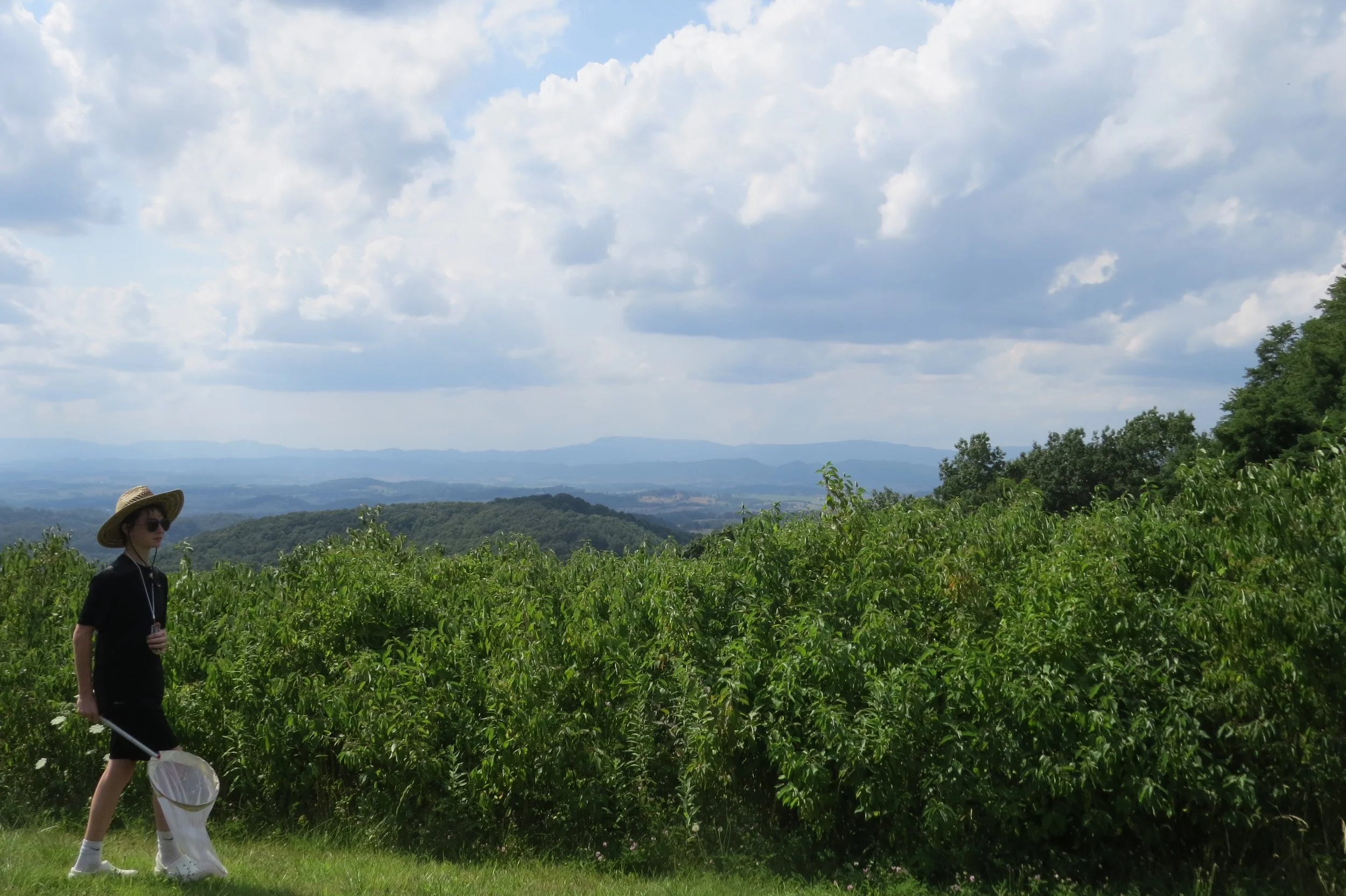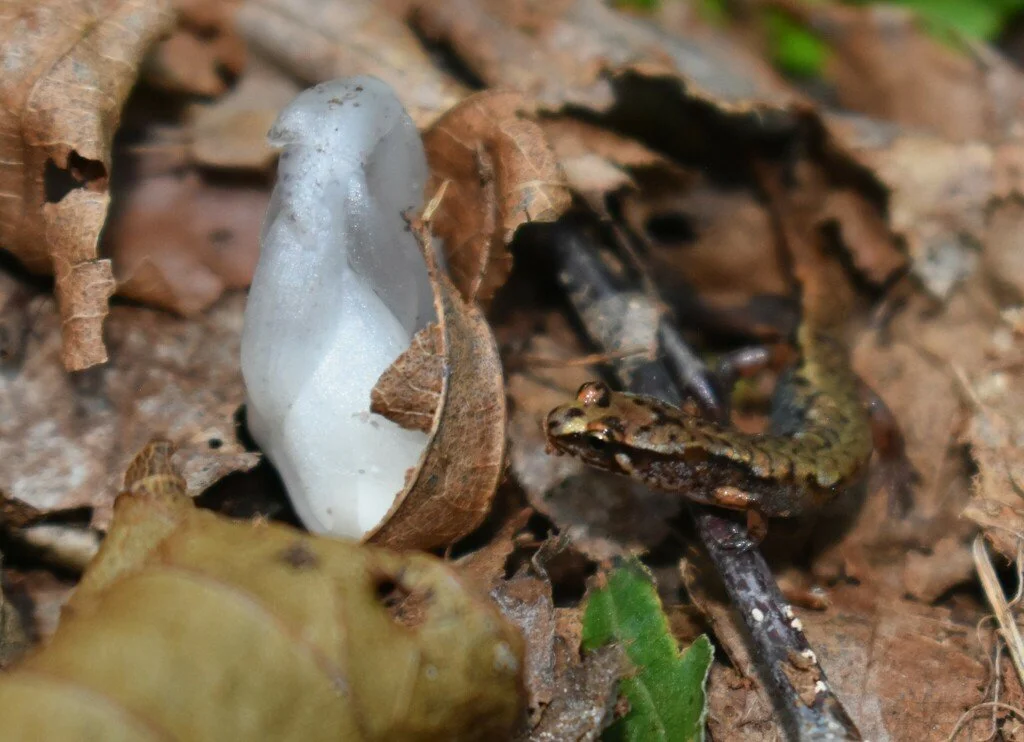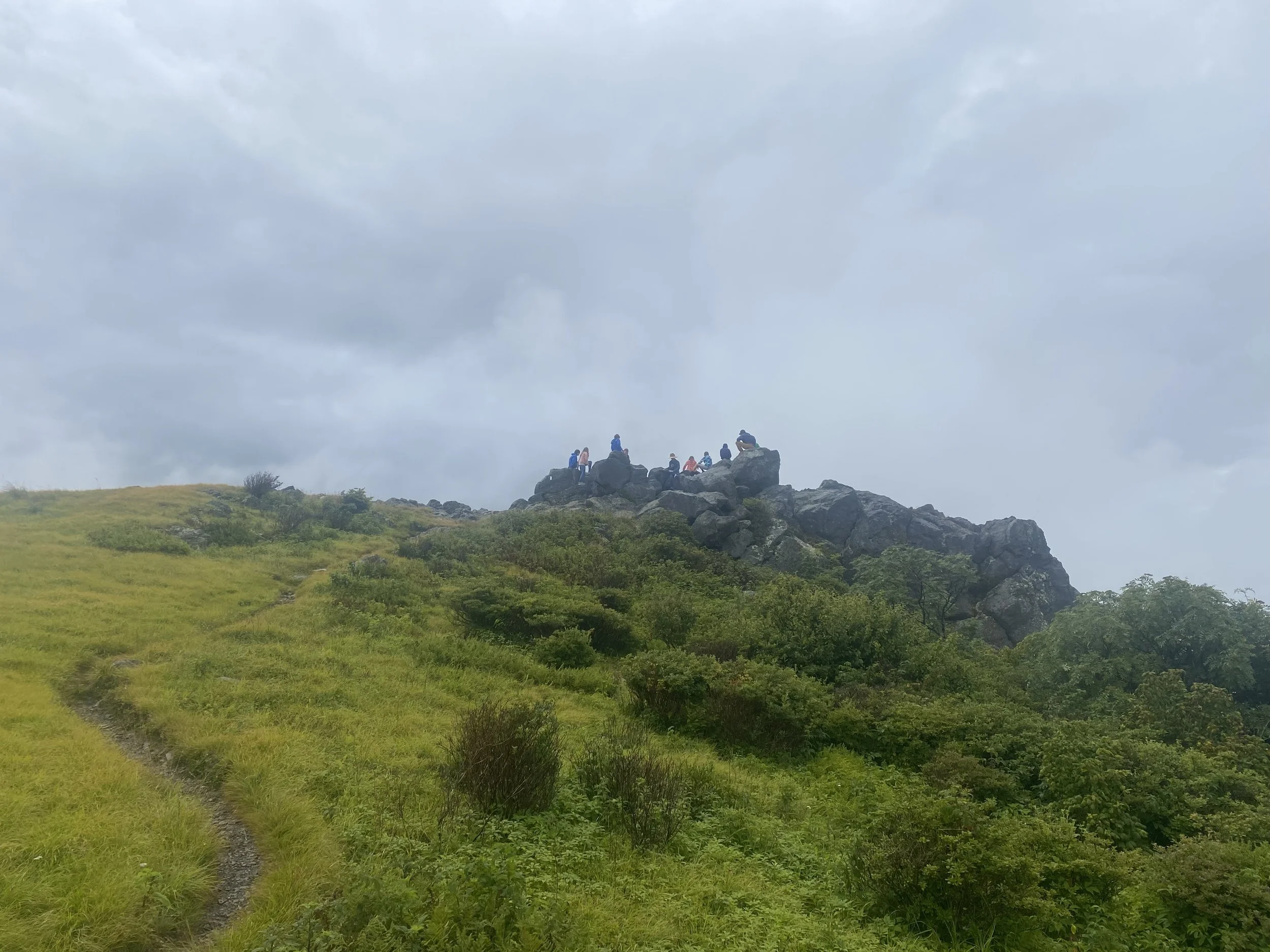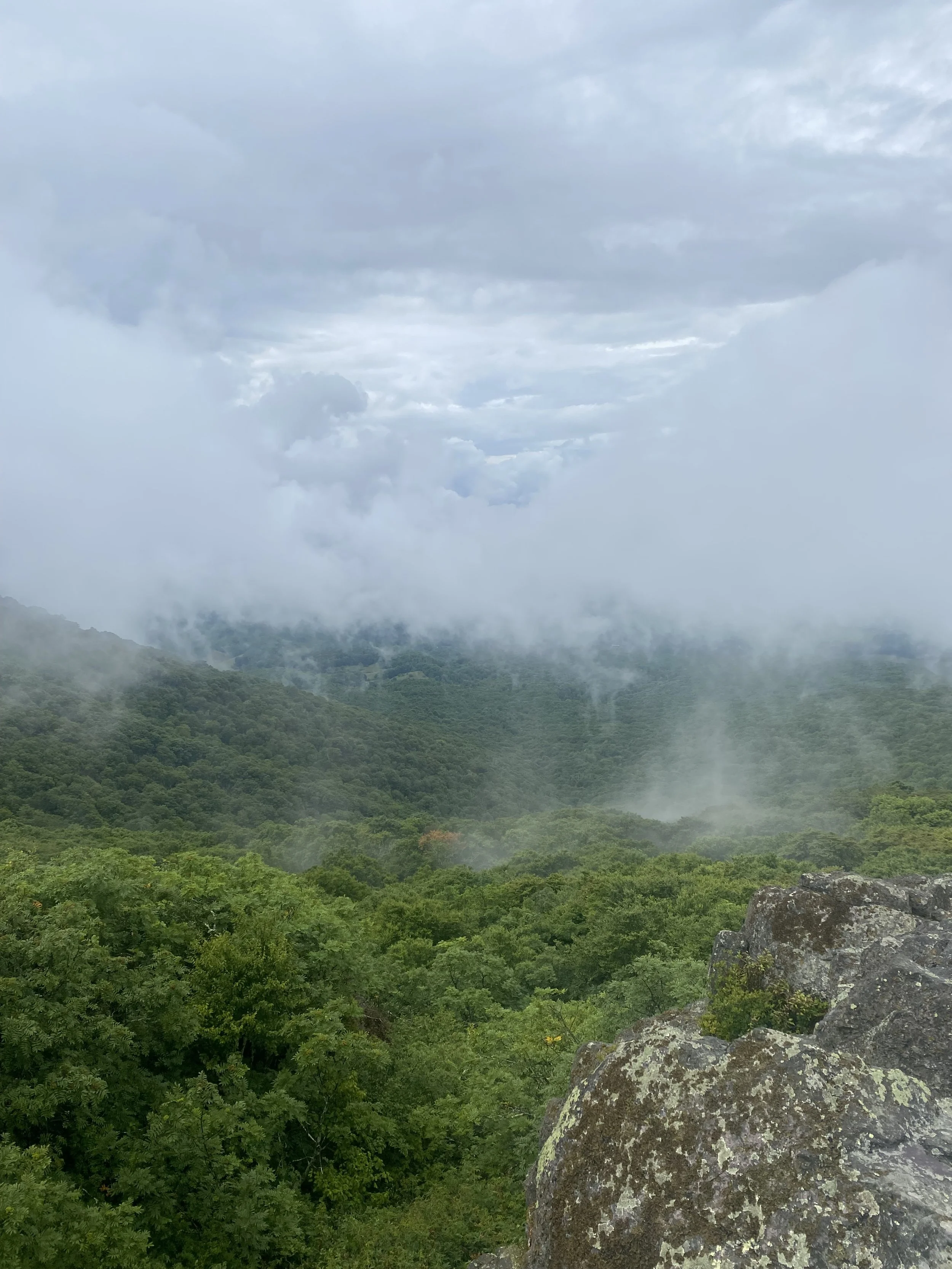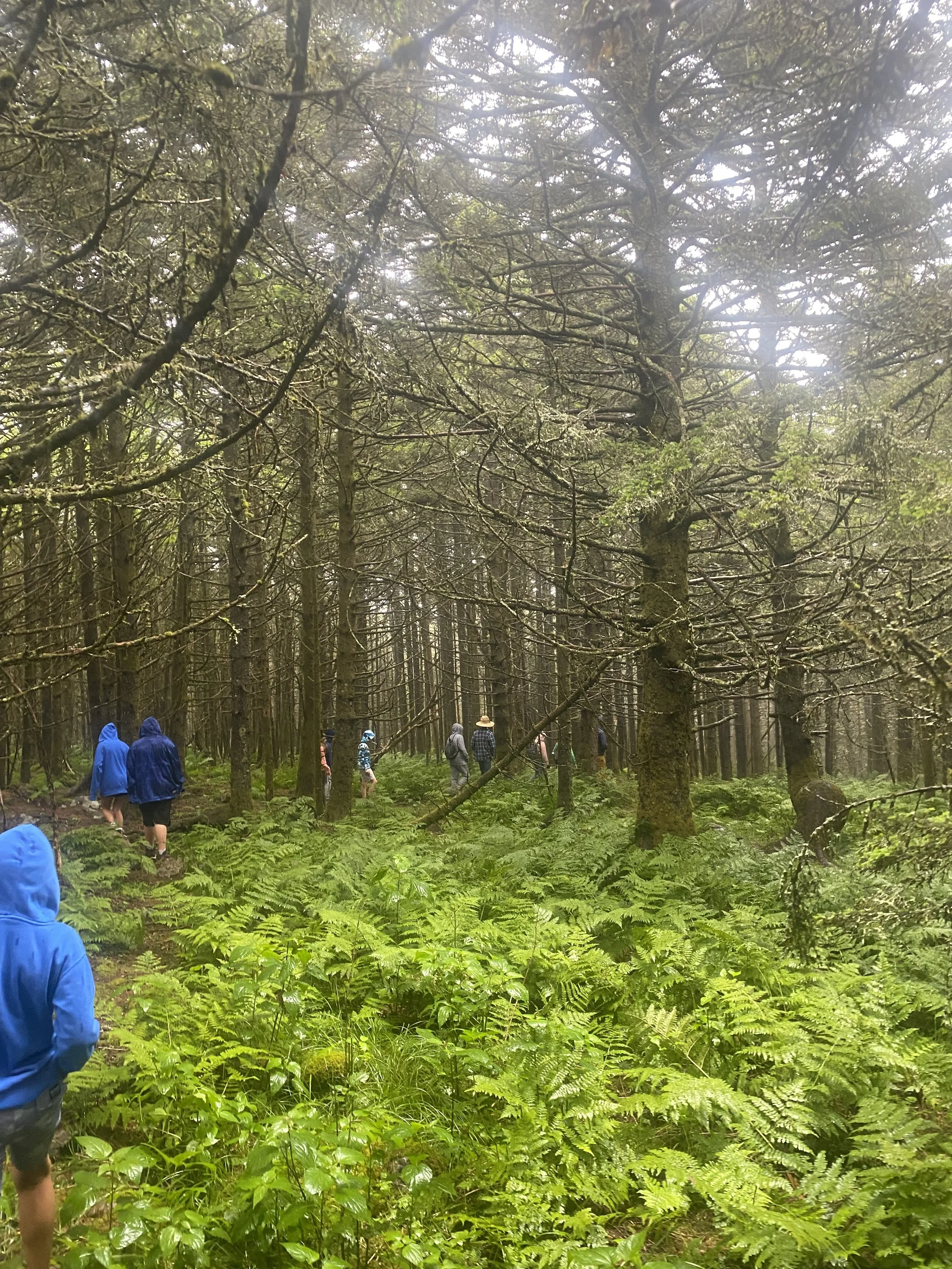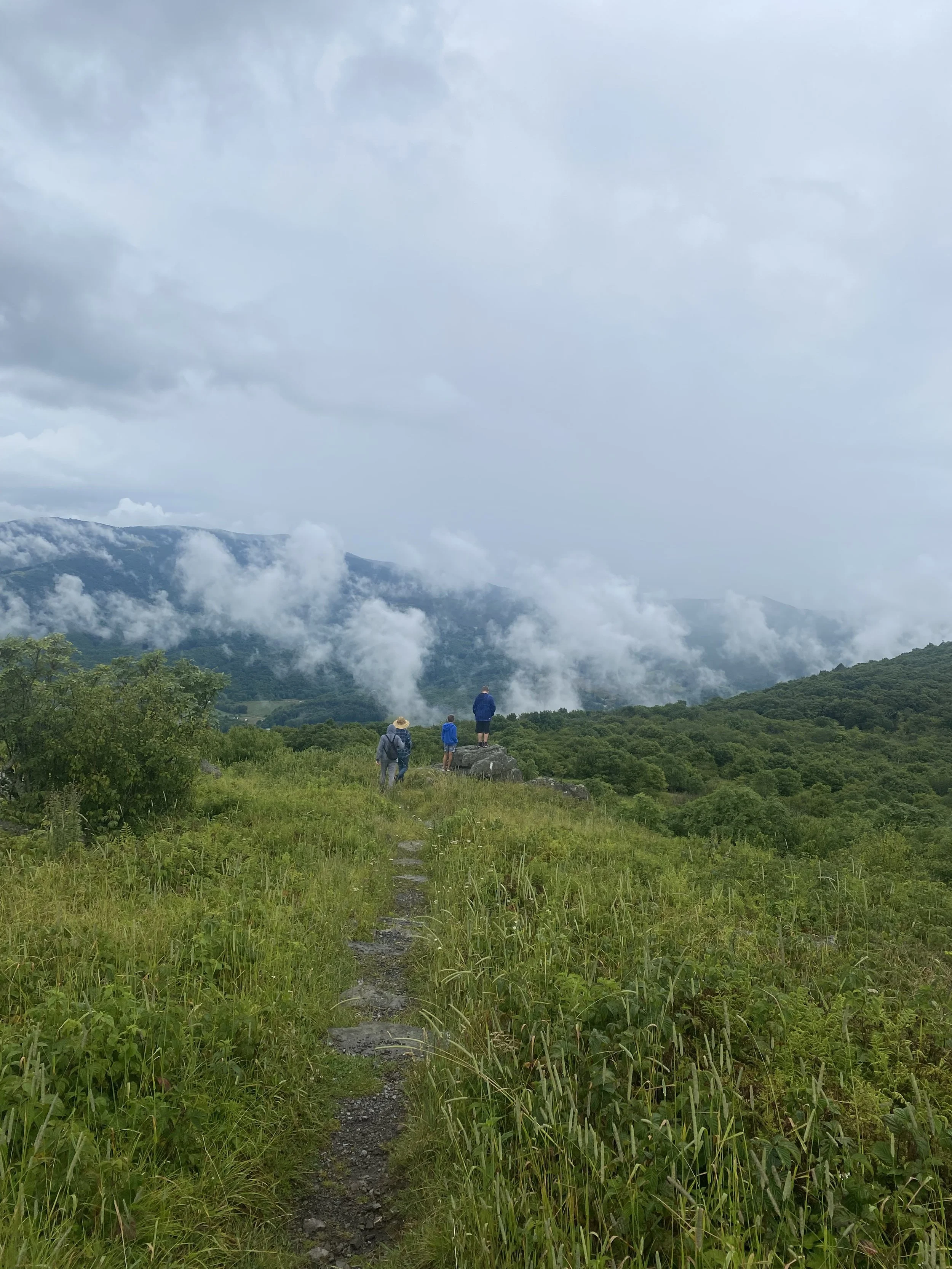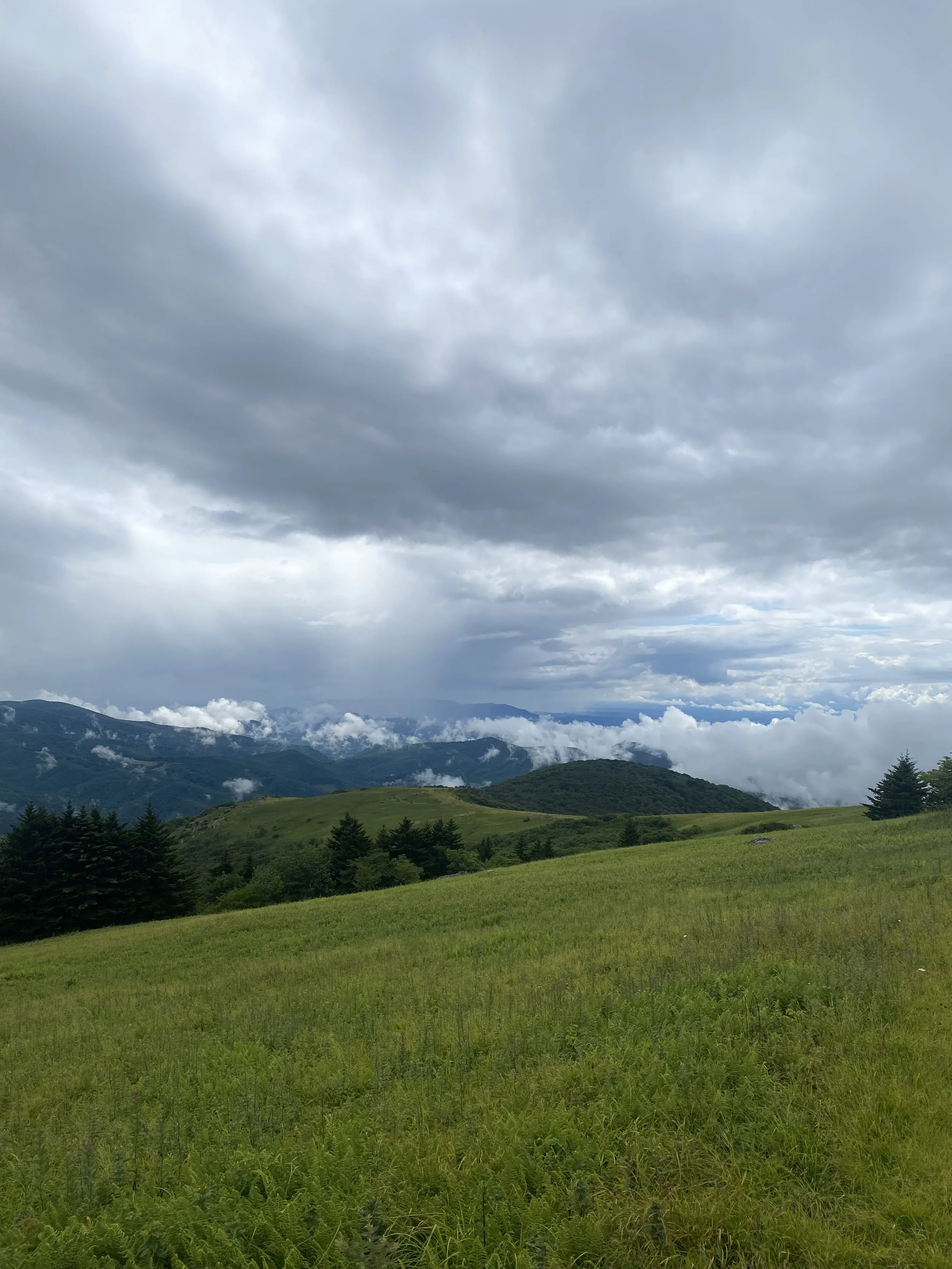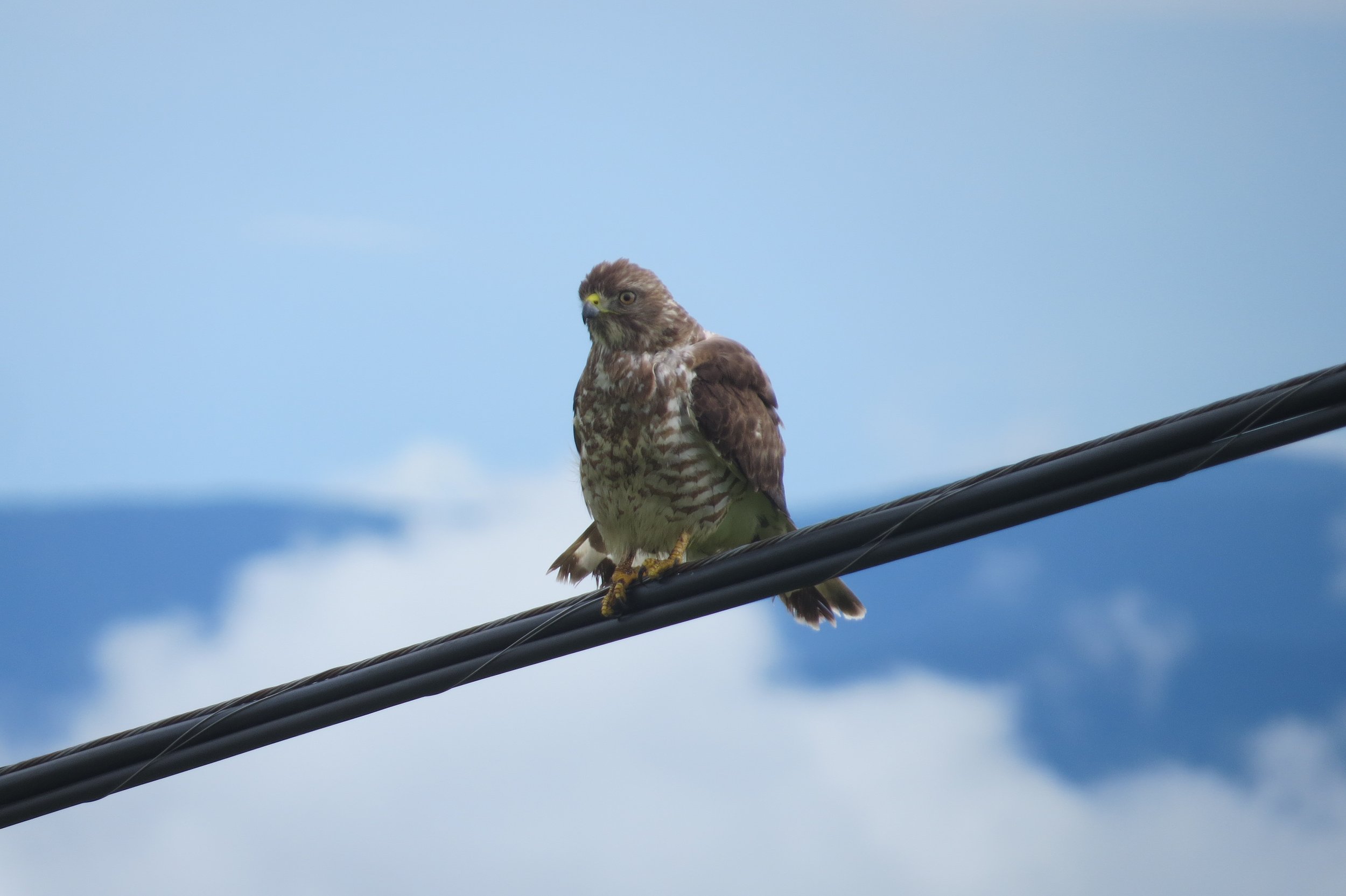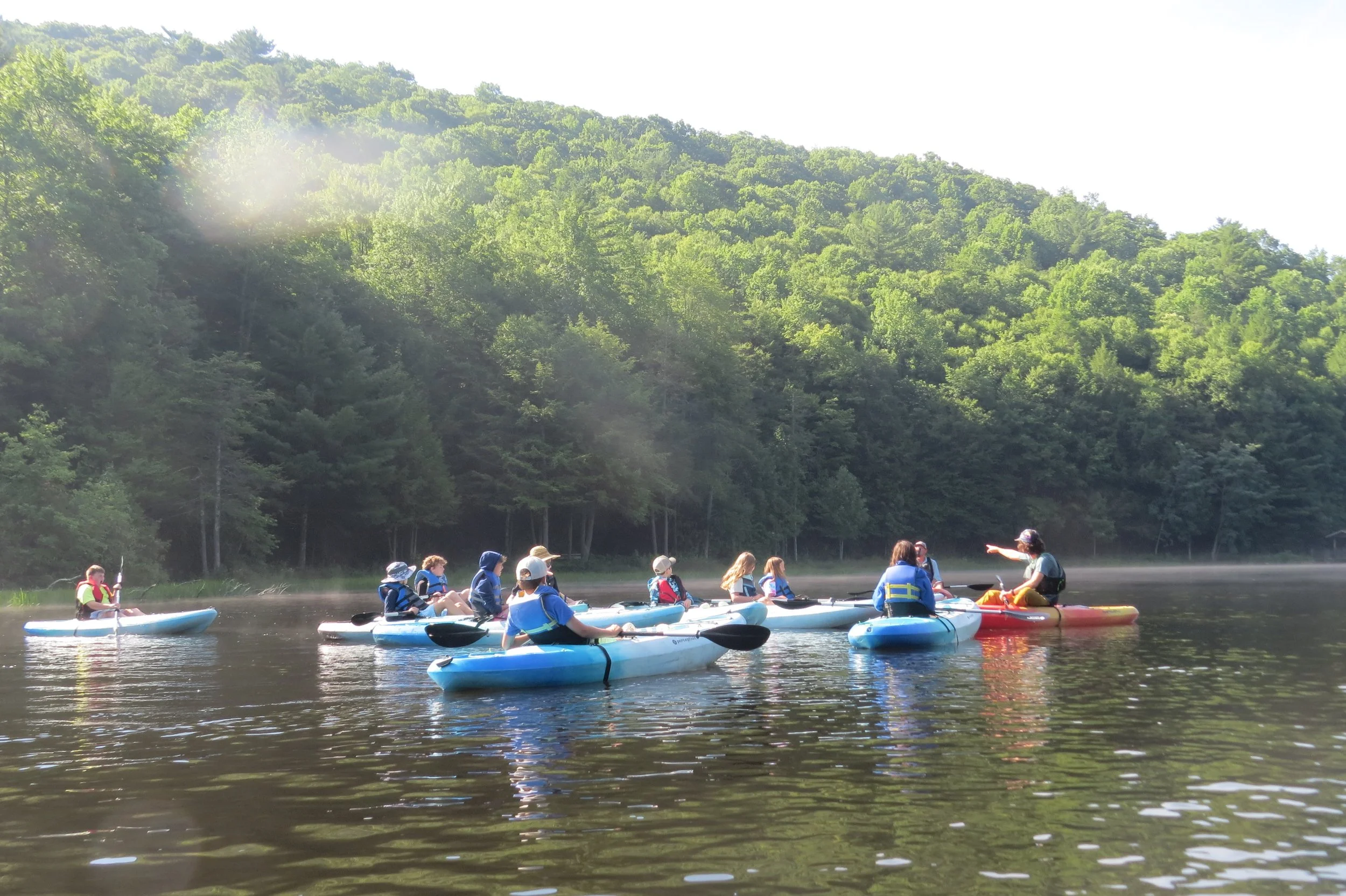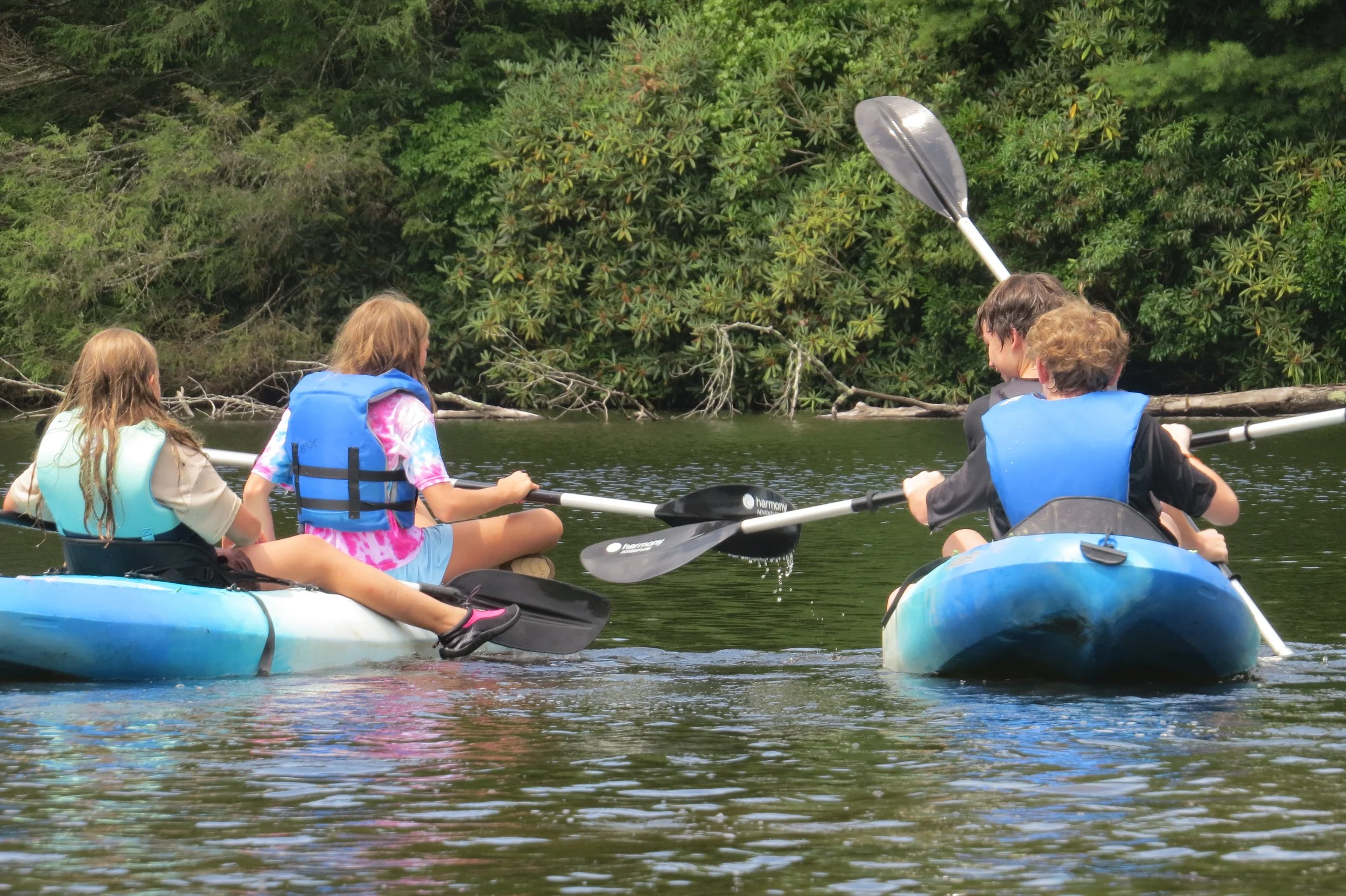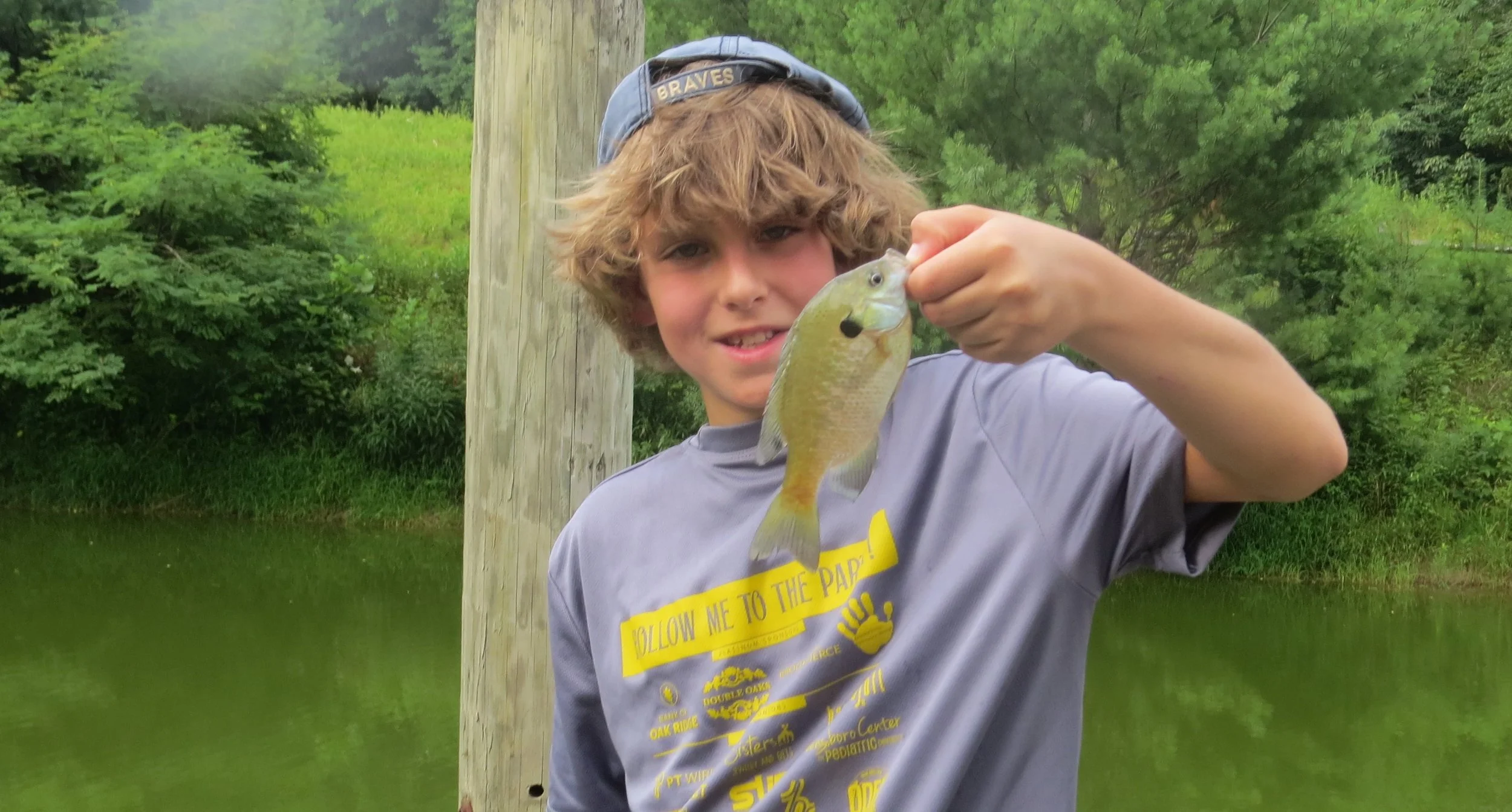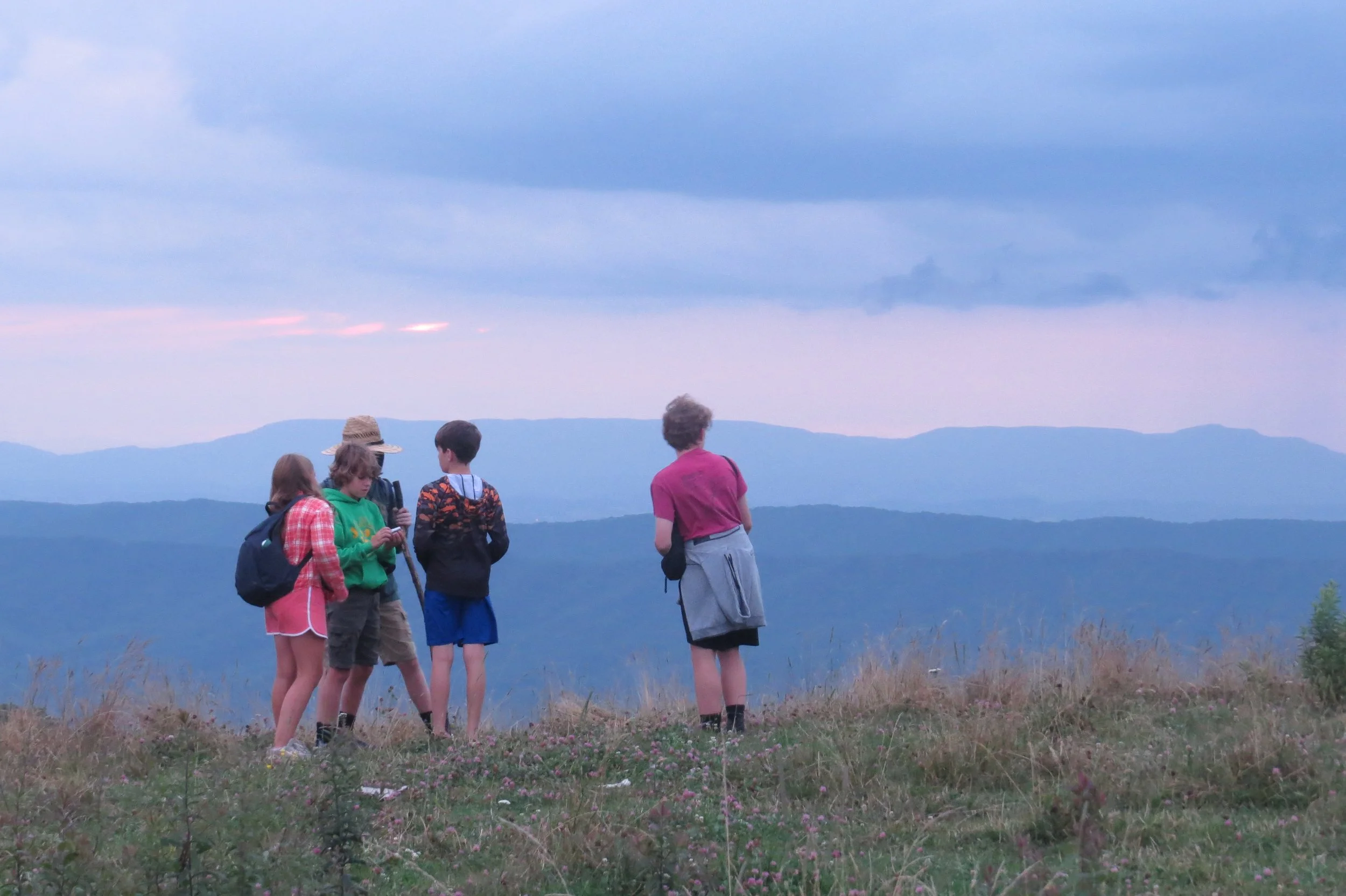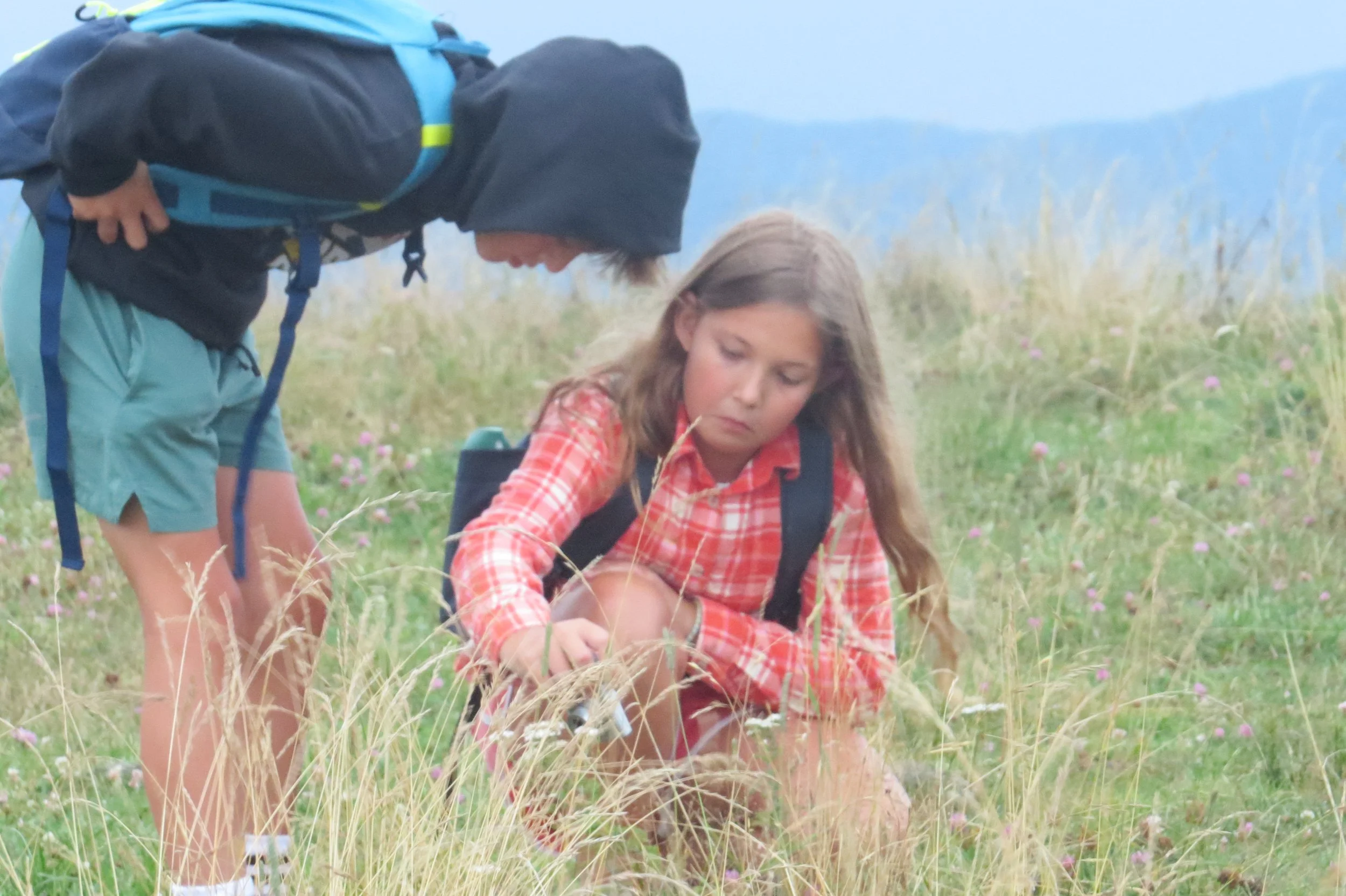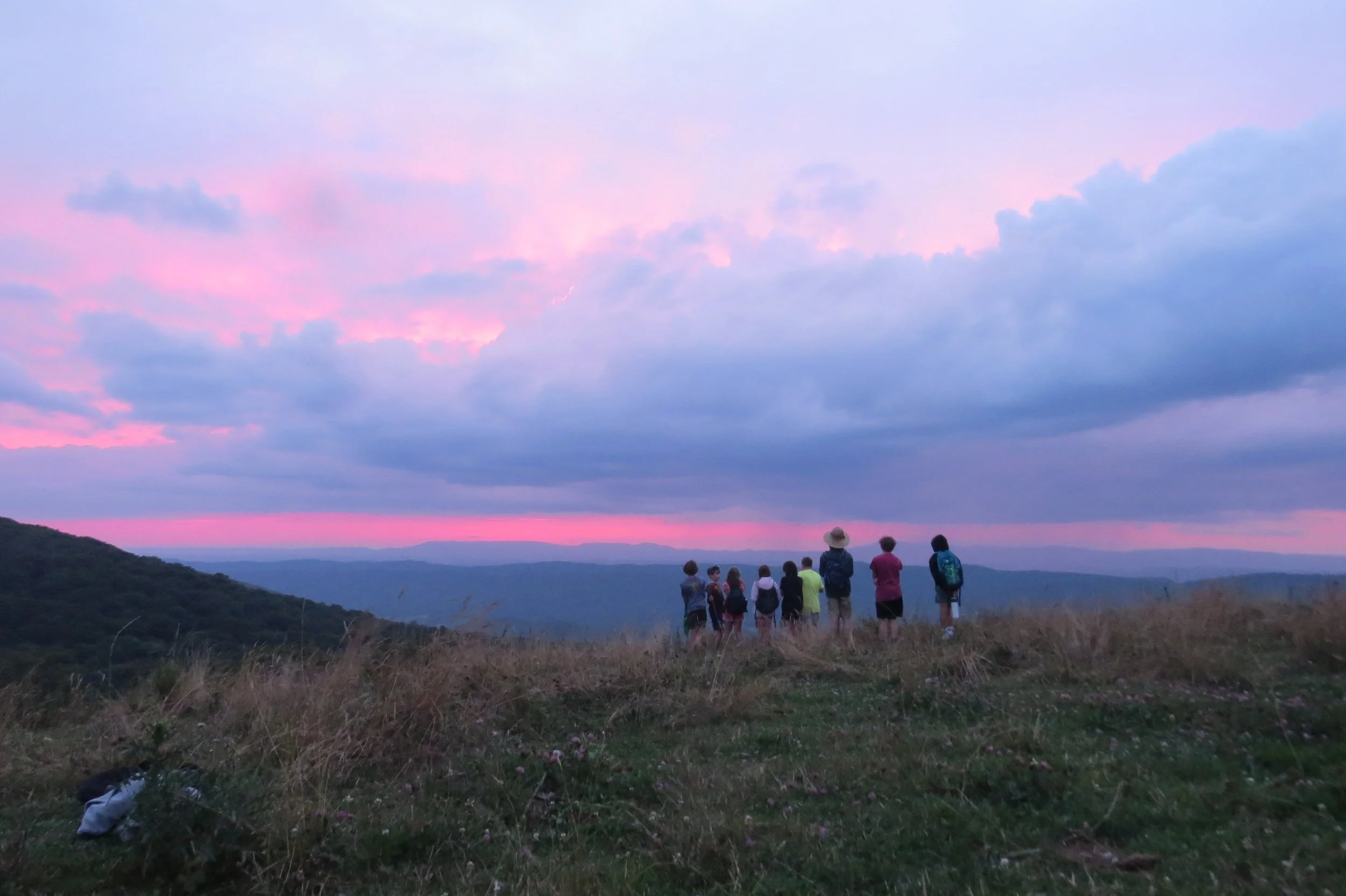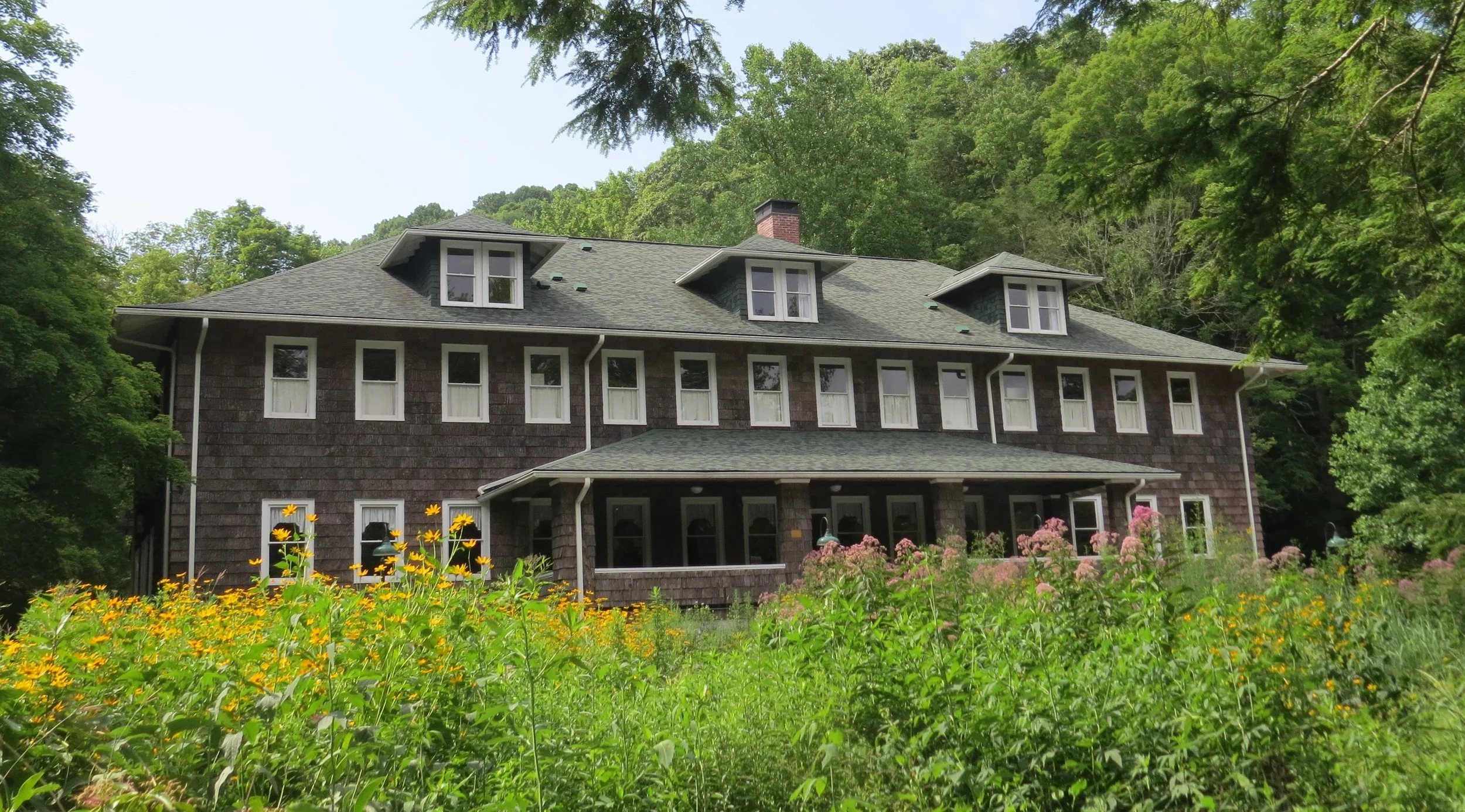Discovery Camp 2024
This year’s Discovery Camp was a great expedition, and introduction to the many ways we explore the high country of Southwest Virginia here at the Blue Ridge Discovery Center. Climbing the second highest peak in the state of Virginia, snorkeling amongst our largest native reptiles, wandering through nocturnal temperate rainforests, and paddling in remote mountain waterways were just a few of the adventures our campers had a chance to take on. These young adventurers not only stood up the challenge, but had a lot of fun learning each new frontier. On day one, we focused on essential naturalist skills. Campers learned the basics of nature journaling, sketching, field guides and other identification resources, and orienteering. Then, we traveled to a lookout on Iron Mountain for an entomological lesson; how to use aerial nets, how to identify the stranger groups of bugs, and how we preserve the pinned insects in our collections. After dinner, a driving rain held us back for a while, but made for an exceptional night to search for salamanders. As the drought ended, the forest floor was covered in the globally renowned density of salamanders Mt. Rogers has to share. We caught dozens, saw hundreds, and watched around seven different species in their unique habitats. They included giant, semiaquatic and newly described (just two years ago, in 2022) Kanawha Blackbelly Salamanders, the charismatic, golden-striped Blue Ridge Two-lined Salamanders, and a special encounter with the fragile Northern Pygmy Salamander, a contender for the smallest salamander species on the planet.
A Northern Pygmy Salamander, posing beside a single, budding flower of the parasitic Ghost Pipes plant.
Day two was Backcountry Day, where we started out learning some primitive skills. Starting with shelter-building, we climbed a steep slope behind the Schoolhouse to a plateau where the forest was covered in fallen leaf litter and deadfall branches. As a rainstorm rolled in, we constructed a lean-to sturdy enough for one person. The light rain was a perfect opportunity to check for leaks in the shelter, patched with armfuls of dead leaves. But since the rain picked up in intensity, and there were a lot more than the one of us that would fit in our shelter, we bushwhacked our way back down the mountain. On our scrambling descent, one camper excitedly remarked, “This feels like something out of a movie!” as we hurdled giant white pine logs on the steep downhill grade and briskly escaped the brutal downpour.
Shelter-building as the rain began to test our humble abode.
After lunch, we ventured into the higher altitudes, and began our ascent to Whitetop Mountain’s summit, the second highest peak in Virginia. The rain was difficult to avoid, but none of our intrepid explorers let it get the best of them. We explored mossy knolls, found some more salamanders and insects, and wandered amongst sprawling expanses of mountain wood ferns. After hiking the summit, we continued down to Buzzard Rock in the thick fog. We watched some special wildlife emerge from the beech forest as we walked, including multiple White-tailed Deer families of assorted bucks, does, and fawns, the compact, forest-dwelling and endemic rabbit known as the Appalachian Cottontail to wildlife biologists, and a Broad-winged Hawk perched on an electrical wire overlooking Pond Mountain in the distance.
As we crossed the famous meadows of Whitetop Mountain’s grassy bald ecosystems toward the overlook, the fog lifted and we were able to look out across a spectacular cloud inversion. A landscape photographer’s dream, the cloud inversion gave us the feeling of standing on a “sky island” with a sea of clouds coating the valleys far into North Carolina and Tennessee in the distance. At the rock, we took a look at some medicinal plants, including the fragrant “jellico root,” the folk name for Mountain Angelica (Angelica triquinata). We ended the day with s’mores around the campfire, and a successful search for Eastern Screech Owls behind the Blue Ridge Discovery Center.
Drew Morris going over some kayaking safety rules.
Not a bad view for an early morning paddle.
Release of a young Common Snapping Turtle, watched by eager snorkelers.
Paddle high-five while “canoeing” by kayak.
Day three was Water Day, where we prepared skills we use on kayaking expeditions. The morning began with an early morning lesson in paddling on a small local lake, where we explored the peaceful water and mysterious bays of the lake. We saw a curious river otter, ravens soaring overhead, the frightened, shore-dwelling spotted sandpipers, and swarms of beautiful dragonflies with unique names like “Spangled Skimmer” and “Calico Pennant” to describe their myriads of colors. After kayaking, everyone had a chance to snorkel in the lake. Some of the sightings were gurgled out in excited exclamations through snorkel masks. Schools of brook trout, the whiskered fry of bullhead catfish, and enormous snapping turtles were all observed gliding under the crystal-clear water. After a lunch at the takeout, we returned to the Center.
In search of the in-”seine”-ly cool macroinvertebrates that live beneath the fast and cold riffles of Big Laurel Creek.
We immediately ventured down to Big Laurel Creek, where naturalist-educator Brendan Murphy led a lesson about capturing and identifying aquatic macroinvertebrates. Campers caught the aquatic nymphs of caddisflies, stoneflies, mayflies and other strange insects like water penny beetles and cranefly larvae. A plethora of non-insects also made an appearance, from dozens of crayfish to unique, stream-dwelling fish like Banded Sculpins (Cottus carolinae) with their genetic ties to deep-sea oddities, and Fantail Darters (Etheostoma flabellare) that guard nests of eggs glued to smooth river stones. Before dinner, we also hiked out to a local “fishing hole” on director Lisa Benish’s property, where campers had the opportunity to fly fish or catch butterflies, depending on their preference. A few patient campers were successful while fly fishing and had a chance to catch bluegill and largemouth bass.
Bluegill on the fly.
After dinner, we hiked the Appalachian Trail to a rocky outcrop and watched a sunset as ominous as it was beautiful sink down over Clinch Mountain in the west. We also had a wonderful campfire, making “biscuits-on-a-stick,” one of our most delicious backwoods desserts, while picking and singing some of the old bluegrass, folk and old-time songs that are beloved in the Konnarock valley.
Our final morning started at dawn, with a birding expedition to the South Fork of the Holston River. Despite the lull in bird activity for late summer, we were surrounded by the songs and appearances of a few dozen native birds. Among others, we watched a Bald Eagle soar downriver, a pair of Belted Kingfishers hunting, and a Double-crested Cormorant blast over the wetlands. Everyone left camp with high spirits and improved outdoor skills, and we’re confident everyone who attended is ready to take on bigger expeditions in the future.
As a personal anecdote, this trip spurred the realization that this might be the last overnight expedition camp I’ll be guiding at the BRDC. For five years, I’ve been involved with this organization since current director Lisa Benish and former director Aaron Floyd invited me into this extremely special project. I’ll definitely miss these adventures, and the chance to watch how quickly the kids who have a chance to participate in these programs develop real, applicable knowledge for their own adventures in the woods and waters of these ancient mountains. I’m honored to be a part of these uniquely immersive programs, and I’m thankful I’ve had the chance to learn many lessons on each of these expeditions as I teach different lessons to budding naturalists and other explorers. The positive changes just keep rolling, and I’m excited to see what is happening at this special place every time that I return.
